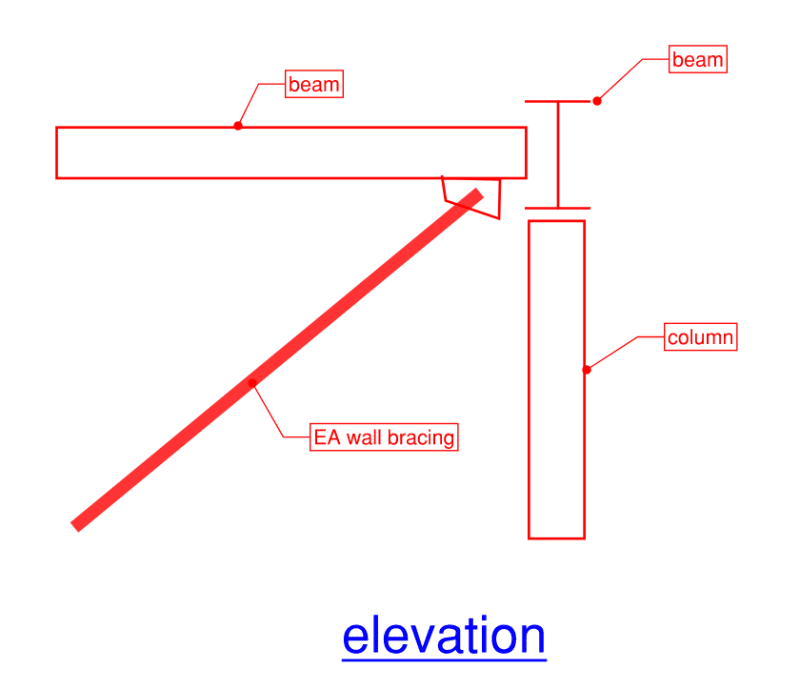Hi,
I have this cross-wall bracing. For some reason, I've connected the wall bracing to the underside of the floor beam, as shown below. Due to this configuration, the wall bracing may buckle under the gravity load applied to the floor beam. While I understand that wall bracings are allowed to buckle under wind and designed as tension-only elements, I am unsure whether I can disregard the buckling under gravity since I have a column designed to take the axial load. How can I determine the out-of-plane displacement of the wall bracing after buckling?

I have this cross-wall bracing. For some reason, I've connected the wall bracing to the underside of the floor beam, as shown below. Due to this configuration, the wall bracing may buckle under the gravity load applied to the floor beam. While I understand that wall bracings are allowed to buckle under wind and designed as tension-only elements, I am unsure whether I can disregard the buckling under gravity since I have a column designed to take the axial load. How can I determine the out-of-plane displacement of the wall bracing after buckling?

